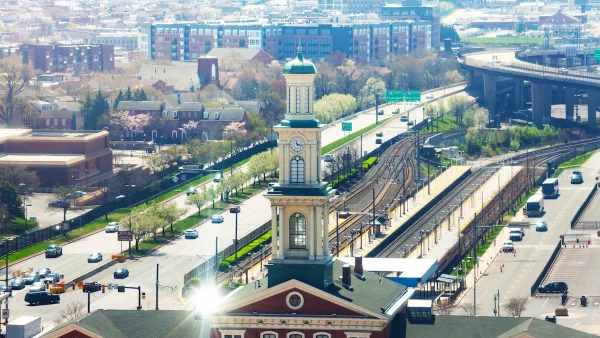Matthew Ridgeway wonders if the infrastructure benefits of new streetcar projects- facade improvement, streetscaping, community investment- could happen with direct investment, leaving streetcars out of the picture.
"The streetcar is once again becoming a key tool for economic development, this time to spur redevelopment of central city areas in transition. Examples of streetcar systems in the US include: Portland, Oklahoma City, and San Francisco. Each of these streetcar systems has resulted in major private-sector investment in the adjacent properties with windfalls to local jurisdictions resulting from increased property values, sales taxes, and job creation.
And yet in this go-round, the streetcar has not fundamentally changed access to an area. Where the streetcars of the early 1900's provided access to areas otherwise inaccessible, the current streetcar systems provide additional capacity to move people, but only nominally so and often at the expense of auto capacity. And the streetcars are often very slow. I have walked from Portland State University to the Pearl District staying ahead of the streetcar the entire mile-plus distance. So while we are infatuated with the streetcar (what is it about trains that gets people so excited?), is it really the streetcar that facilitates change and economic development? Or is it simply government investment?"
FULL STORY: Economic Stimulus that Improves Main Street

Maui's Vacation Rental Debate Turns Ugly
Verbal attacks, misinformation campaigns and fistfights plague a high-stakes debate to convert thousands of vacation rentals into long-term housing.

Planetizen Federal Action Tracker
A weekly monitor of how Trump’s orders and actions are impacting planners and planning in America.

In Urban Planning, AI Prompting Could be the New Design Thinking
Creativity has long been key to great urban design. What if we see AI as our new creative partner?

King County Supportive Housing Program Offers Hope for Unhoused Residents
The county is taking a ‘Housing First’ approach that prioritizes getting people into housing, then offering wraparound supportive services.

Researchers Use AI to Get Clearer Picture of US Housing
Analysts are using artificial intelligence to supercharge their research by allowing them to comb through data faster. Though these AI tools can be error prone, they save time and housing researchers are optimistic about the future.

Making Shared Micromobility More Inclusive
Cities and shared mobility system operators can do more to include people with disabilities in planning and operations, per a new report.
Urban Design for Planners 1: Software Tools
This six-course series explores essential urban design concepts using open source software and equips planners with the tools they need to participate fully in the urban design process.
Planning for Universal Design
Learn the tools for implementing Universal Design in planning regulations.
planning NEXT
Appalachian Highlands Housing Partners
Mpact (founded as Rail~Volution)
City of Camden Redevelopment Agency
City of Astoria
City of Portland
City of Laramie



























